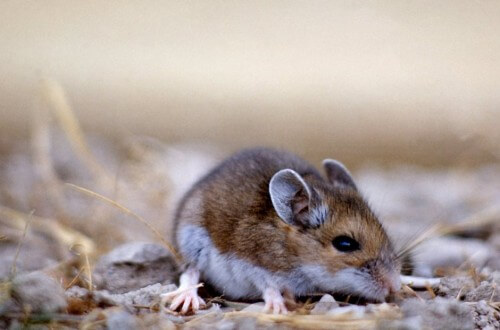The structure of mouse burrows is determined by a small number of genetic sequences
Noam Levithan and Yonat Ashhar Galileo

When talking about genes and inherited traits, the common examples are physical characteristics such as eye color, the shapes of the beaks of Darwin's pharaohs or the patterns that appear on cat fur. But these characteristics are not the only ones affected by genes: behavioral traits may also be inherited. Studies have shown that birds do not need to learn how to build their nests, spiders do not learn to weave their webs, and beavers - how to build dams. Therefore, it is assumed that these traits, and many other behavioral traits, are determined by the animals' genes and are inherited. Despite this, almost nothing is known about their genetic basis.
Jess Weber (Weber), Brent Peterson (Peterson) and Hopi Hoekstra (Hoekstra) from Harvard University decided to try to find the genes responsible for building burrows in two biologically related species of mice. The researchers chose the beach mouse (Peromyscus polionotus) and in the deer mouse (peromyscus maniculatus), both of the Ugarim family, who, despite their family proximity, build very different burrows.
The beach mouse builds a complex burrow that includes a long entrance tunnel, a large nesting chamber and an escape tunnel that leads from the nest up, towards the surface, but ends without an exit opening. In case of danger, such as a snake trying to penetrate the burrow, the beach mouse miraculously escapes the tunnel and breaks out through the sand (as you can see in the video below). The stag mouse lives in a hole in the ground - it builds a typical mouse burrow with a short entrance tunnel and a small nesting chamber and no escape tunnel.
To test whether the construction of burrows is indeed innate, the researchers transferred mice of both sexes, which had not been raised in the wild and had not seen sand since their childhood, into large sandboxes in the laboratory. The mice dug burrows as soon as they were placed in the boxes. The researchers tested the structure of the burrows and their length with the help of polyurethane foam, and found that the burrows are very similar to those that can be found in nature, that is, the burrows that the mice build are a physical representation of the tendency built into their genome.
After showing that building burrows is an innate behavior, Weber and his colleagues began searching for the regions of the genome responsible for this trait. They bred beach mice and deer mice to see which burrows the hybrids would build; It became clear to them that all the offspring built complex burrows, very similar to those of the beach mouse. That is, the genes responsible for building burrows with a long entrance and an escape tunnel are dominant, and any mouse that inherits even one copy of the genes will build beach mouse burrows. After that, the researchers paired the offspring of the hybrids with deer mice, which as mentioned build simple burrows, and examined the burrows of the offspring. The offspring of the second hybridization have different combinations of the genes that affect the construction of the burrow, so it is expected that they will build different types of burrows. Indeed, the second generation of hybrids built diverse burrows: some built burrows like those of the elk mouse, without an escape tunnel and with a short entrance tunnel, others built burrows identical to those of the beach mouse, and others built intermediate burrows - with or without an escape tunnel and with a long entrance tunnel different (which implies that this behavior is responsible for a combination of a limited number of genes in the mouse).
Weber and his colleagues took advantage of the ease with which it is possible to sequence DNA and analyzed the genome of the offspring of the hybrids (and of the parents as a basis). The results of the analysis revealed three regions in the genome that affect the length of the entrance tunnel. Each of these areas contributes separately, and equally, about three cm along the length of the tunnel. Also, a fourth region was discovered in the genome, which is also unrelated to the other regions, which determines whether or not an escape tunnel will be built.
As expected in any complex behavior, there are additional genetic factors involved in the construction of the burrows. For example, some of the mice of the second generation did not build an escape tunnel, even though they inherited beach mouse DNA in the fourth region. However, the influence of the four regions on the structure of the mice's burrows is greatest, and the researchers showed for the first time in the study, published in the journal Nature, because a complex behavioral trait is genetically determined by a limited number of regions in the genome. All that remains now, and the researchers are working on it vigorously, is to locate the genes that are in the discovered areas and study their operation.
The original article:
Weber, JN, Peterson, BK & Hoekstra, HE Discrete genetic modules are responsible for complex burrow evolution in Peromyscus mice. Nature 493, 402-405 (2013). doi: 10.1038/nature11816
The original article was published in Galileo magazine issue 175, March 2013

2 תגובות
Fascinating…….there are implications…also for us…as humans….there is a fairly close genetic resemblance between humans and mice…
A difference, to the best of my memory, of 1000 genes....
Cool, I liked the experiment and the way of thinking.